Top Ten Worst Animals to Try to Kiss
The Top Ten
1 Alligator
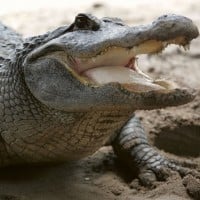 An alligator is a crocodilian in the genus Alligator of the family Alligatoridae. The two living species are the American alligator and the Chinese alligator. Additionally, several extinct species of alligator are known from fossil remains. Alligators have long existed since the Oligocene epoch 37 million ...read more.
An alligator is a crocodilian in the genus Alligator of the family Alligatoridae. The two living species are the American alligator and the Chinese alligator. Additionally, several extinct species of alligator are known from fossil remains. Alligators have long existed since the Oligocene epoch 37 million ...read more.
 An alligator is a crocodilian in the genus Alligator of the family Alligatoridae. The two living species are the American alligator and the Chinese alligator. Additionally, several extinct species of alligator are known from fossil remains. Alligators have long existed since the Oligocene epoch 37 million ...read more.
An alligator is a crocodilian in the genus Alligator of the family Alligatoridae. The two living species are the American alligator and the Chinese alligator. Additionally, several extinct species of alligator are known from fossil remains. Alligators have long existed since the Oligocene epoch 37 million ...read more.
2 Hippopotamus
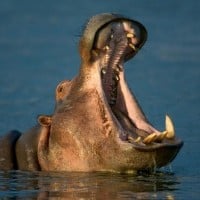 The common hippopotamus, or hippo, is a large, mostly herbivorous mammal in sub-Saharan Africa, and one of only two extant species in the family Hippopotamidae, the other being the pygmy hippopotamus.
The common hippopotamus, or hippo, is a large, mostly herbivorous mammal in sub-Saharan Africa, and one of only two extant species in the family Hippopotamidae, the other being the pygmy hippopotamus.
 The common hippopotamus, or hippo, is a large, mostly herbivorous mammal in sub-Saharan Africa, and one of only two extant species in the family Hippopotamidae, the other being the pygmy hippopotamus.
The common hippopotamus, or hippo, is a large, mostly herbivorous mammal in sub-Saharan Africa, and one of only two extant species in the family Hippopotamidae, the other being the pygmy hippopotamus.
3 Snake
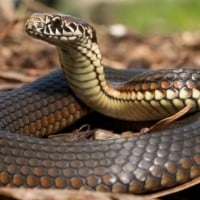 Snakes are elongated, limbless, carnivorous reptiles of the suborder Serpentes. Like all other squamates, snakes are ectothermic, amniote vertebrates covered in overlapping scales. Many species of snakes have skulls with several more joints than their lizard ancestors, enabling them to swallow prey much larger than their heads (cranial kinesis). To accommodate their narrow bodies, snakes' paired organs (such as kidneys) appear one in front of the other instead of side by side, and most have only one functional lung. Some species retain a pelvic girdle with a pair of vestigial claws on either side of the cloaca. Lizards have evolved elongate bodies without limbs or with greatly reduced limbs ...read more.
Snakes are elongated, limbless, carnivorous reptiles of the suborder Serpentes. Like all other squamates, snakes are ectothermic, amniote vertebrates covered in overlapping scales. Many species of snakes have skulls with several more joints than their lizard ancestors, enabling them to swallow prey much larger than their heads (cranial kinesis). To accommodate their narrow bodies, snakes' paired organs (such as kidneys) appear one in front of the other instead of side by side, and most have only one functional lung. Some species retain a pelvic girdle with a pair of vestigial claws on either side of the cloaca. Lizards have evolved elongate bodies without limbs or with greatly reduced limbs ...read more.
 Snakes are elongated, limbless, carnivorous reptiles of the suborder Serpentes. Like all other squamates, snakes are ectothermic, amniote vertebrates covered in overlapping scales. Many species of snakes have skulls with several more joints than their lizard ancestors, enabling them to swallow prey much larger than their heads (cranial kinesis). To accommodate their narrow bodies, snakes' paired organs (such as kidneys) appear one in front of the other instead of side by side, and most have only one functional lung. Some species retain a pelvic girdle with a pair of vestigial claws on either side of the cloaca. Lizards have evolved elongate bodies without limbs or with greatly reduced limbs ...read more.
Snakes are elongated, limbless, carnivorous reptiles of the suborder Serpentes. Like all other squamates, snakes are ectothermic, amniote vertebrates covered in overlapping scales. Many species of snakes have skulls with several more joints than their lizard ancestors, enabling them to swallow prey much larger than their heads (cranial kinesis). To accommodate their narrow bodies, snakes' paired organs (such as kidneys) appear one in front of the other instead of side by side, and most have only one functional lung. Some species retain a pelvic girdle with a pair of vestigial claws on either side of the cloaca. Lizards have evolved elongate bodies without limbs or with greatly reduced limbs ...read more. Seriously I don't have to do a explanation
4 Rhinoceros


5 Tarantula
 Tarantulas comprise a group of large and often hairy arachnids belonging to the Theraphosidae family of spiders, of which approximately 900 species have been identified.
Tarantulas comprise a group of large and often hairy arachnids belonging to the Theraphosidae family of spiders, of which approximately 900 species have been identified.
 Tarantulas comprise a group of large and often hairy arachnids belonging to the Theraphosidae family of spiders, of which approximately 900 species have been identified.
Tarantulas comprise a group of large and often hairy arachnids belonging to the Theraphosidae family of spiders, of which approximately 900 species have been identified.
6 Elephant
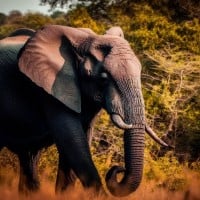 Elephants are the largest existing land animals. Three living species are currently recognised: the African bush elephant, the African forest elephant, and the Asian elephant. They are the only surviving members of the family Elephantidae and the order Proboscidea, extinct relatives include mammoths and mastodons. Distinctive features of elephants include a long proboscis called a trunk, tusks, large ear flaps, pillar-like legs, and tough but sensitive skin. The trunk is used for breathing, bringing food and water to the mouth, and grasping objects. Tusks, which are derived from the incisor teeth, serve both as weapons and as tools for moving objects and digging. The large ear flaps assist in ...read more.
Elephants are the largest existing land animals. Three living species are currently recognised: the African bush elephant, the African forest elephant, and the Asian elephant. They are the only surviving members of the family Elephantidae and the order Proboscidea, extinct relatives include mammoths and mastodons. Distinctive features of elephants include a long proboscis called a trunk, tusks, large ear flaps, pillar-like legs, and tough but sensitive skin. The trunk is used for breathing, bringing food and water to the mouth, and grasping objects. Tusks, which are derived from the incisor teeth, serve both as weapons and as tools for moving objects and digging. The large ear flaps assist in ...read more.
 Elephants are the largest existing land animals. Three living species are currently recognised: the African bush elephant, the African forest elephant, and the Asian elephant. They are the only surviving members of the family Elephantidae and the order Proboscidea, extinct relatives include mammoths and mastodons. Distinctive features of elephants include a long proboscis called a trunk, tusks, large ear flaps, pillar-like legs, and tough but sensitive skin. The trunk is used for breathing, bringing food and water to the mouth, and grasping objects. Tusks, which are derived from the incisor teeth, serve both as weapons and as tools for moving objects and digging. The large ear flaps assist in ...read more.
Elephants are the largest existing land animals. Three living species are currently recognised: the African bush elephant, the African forest elephant, and the Asian elephant. They are the only surviving members of the family Elephantidae and the order Proboscidea, extinct relatives include mammoths and mastodons. Distinctive features of elephants include a long proboscis called a trunk, tusks, large ear flaps, pillar-like legs, and tough but sensitive skin. The trunk is used for breathing, bringing food and water to the mouth, and grasping objects. Tusks, which are derived from the incisor teeth, serve both as weapons and as tools for moving objects and digging. The large ear flaps assist in ...read more.
7 Raccoon
 The raccoon, sometimes spelled racoon, also known as the common raccoon, North American raccoon, northern raccoon and colloquially as coon, is a medium-sized mammal native to North America.
The raccoon, sometimes spelled racoon, also known as the common raccoon, North American raccoon, northern raccoon and colloquially as coon, is a medium-sized mammal native to North America.
 The raccoon, sometimes spelled racoon, also known as the common raccoon, North American raccoon, northern raccoon and colloquially as coon, is a medium-sized mammal native to North America.
The raccoon, sometimes spelled racoon, also known as the common raccoon, North American raccoon, northern raccoon and colloquially as coon, is a medium-sized mammal native to North America. Well, this is the animal that would most likely kill you with dome awful disease... If it doesn't scratch out your eyes!
8 Lion
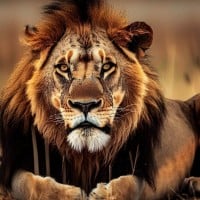 The lion (Panthera leo) is a large cat of the genus Panthera native to Africa and India. It has a muscular, broad-chested body, short, rounded head, round ears, and a hairy tuft at the end of its tail. It is sexually dimorphic; adult male lions are larger than females and have a prominent mane. It is ...read more.
The lion (Panthera leo) is a large cat of the genus Panthera native to Africa and India. It has a muscular, broad-chested body, short, rounded head, round ears, and a hairy tuft at the end of its tail. It is sexually dimorphic; adult male lions are larger than females and have a prominent mane. It is ...read more.
 The lion (Panthera leo) is a large cat of the genus Panthera native to Africa and India. It has a muscular, broad-chested body, short, rounded head, round ears, and a hairy tuft at the end of its tail. It is sexually dimorphic; adult male lions are larger than females and have a prominent mane. It is ...read more.
The lion (Panthera leo) is a large cat of the genus Panthera native to Africa and India. It has a muscular, broad-chested body, short, rounded head, round ears, and a hairy tuft at the end of its tail. It is sexually dimorphic; adult male lions are larger than females and have a prominent mane. It is ...read more.
9 Shark
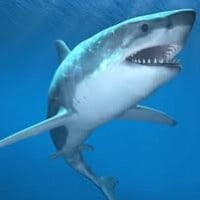 Sharks are a group of elasmobranch fish characterized by a cartilaginous skeleton, five to seven gill slits on the sides of the head, and pectoral fins that are not fused to the head. Modern sharks are classified within the clade Selachimorpha (or Selachii) and are the sister group to the rays. However, ...read more.
Sharks are a group of elasmobranch fish characterized by a cartilaginous skeleton, five to seven gill slits on the sides of the head, and pectoral fins that are not fused to the head. Modern sharks are classified within the clade Selachimorpha (or Selachii) and are the sister group to the rays. However, ...read more.
 Sharks are a group of elasmobranch fish characterized by a cartilaginous skeleton, five to seven gill slits on the sides of the head, and pectoral fins that are not fused to the head. Modern sharks are classified within the clade Selachimorpha (or Selachii) and are the sister group to the rays. However, ...read more.
Sharks are a group of elasmobranch fish characterized by a cartilaginous skeleton, five to seven gill slits on the sides of the head, and pectoral fins that are not fused to the head. Modern sharks are classified within the clade Selachimorpha (or Selachii) and are the sister group to the rays. However, ...read more.
10 Tiger
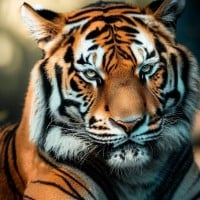 The tiger (Panthera tigris) is the largest living cat species and a member of the genus Panthera. It is most recognisable for its dark vertical stripes on orange fur with a white underside. An apex predator, it primarily preys on ungulates such as deer and wild boar. It is territorial and generally a solitary but social predator, requiring large contiguous areas of habitat, which support its requirements for prey and rearing of its offspring. Tiger cubs stay with their mother for about two years, then become independent and leave their mother's home range to establish their own. ...read more.
The tiger (Panthera tigris) is the largest living cat species and a member of the genus Panthera. It is most recognisable for its dark vertical stripes on orange fur with a white underside. An apex predator, it primarily preys on ungulates such as deer and wild boar. It is territorial and generally a solitary but social predator, requiring large contiguous areas of habitat, which support its requirements for prey and rearing of its offspring. Tiger cubs stay with their mother for about two years, then become independent and leave their mother's home range to establish their own. ...read more.
 The tiger (Panthera tigris) is the largest living cat species and a member of the genus Panthera. It is most recognisable for its dark vertical stripes on orange fur with a white underside. An apex predator, it primarily preys on ungulates such as deer and wild boar. It is territorial and generally a solitary but social predator, requiring large contiguous areas of habitat, which support its requirements for prey and rearing of its offspring. Tiger cubs stay with their mother for about two years, then become independent and leave their mother's home range to establish their own. ...read more.
The tiger (Panthera tigris) is the largest living cat species and a member of the genus Panthera. It is most recognisable for its dark vertical stripes on orange fur with a white underside. An apex predator, it primarily preys on ungulates such as deer and wild boar. It is territorial and generally a solitary but social predator, requiring large contiguous areas of habitat, which support its requirements for prey and rearing of its offspring. Tiger cubs stay with their mother for about two years, then become independent and leave their mother's home range to establish their own. ...read more.The Contenders
11 Dog
 The dog or domestic dog (Canis familiaris or Canis lupus familiaris) is a domesticated descendant of the wolf, and is characterized by an upturning tail. The dog is derived from an ancient, extinct wolf, and the modern wolf is the dog's nearest living relative. The dog was the first species to be domesticated, by hunter–gatherers over 15,000 years ago, before the development of agriculture. Due to their long association with humans, dogs have expanded to a large number of domestic individuals and gained the ability to thrive on a starch-rich diet that would be inadequate for other canids. ...read more.
The dog or domestic dog (Canis familiaris or Canis lupus familiaris) is a domesticated descendant of the wolf, and is characterized by an upturning tail. The dog is derived from an ancient, extinct wolf, and the modern wolf is the dog's nearest living relative. The dog was the first species to be domesticated, by hunter–gatherers over 15,000 years ago, before the development of agriculture. Due to their long association with humans, dogs have expanded to a large number of domestic individuals and gained the ability to thrive on a starch-rich diet that would be inadequate for other canids. ...read more.
 The dog or domestic dog (Canis familiaris or Canis lupus familiaris) is a domesticated descendant of the wolf, and is characterized by an upturning tail. The dog is derived from an ancient, extinct wolf, and the modern wolf is the dog's nearest living relative. The dog was the first species to be domesticated, by hunter–gatherers over 15,000 years ago, before the development of agriculture. Due to their long association with humans, dogs have expanded to a large number of domestic individuals and gained the ability to thrive on a starch-rich diet that would be inadequate for other canids. ...read more.
The dog or domestic dog (Canis familiaris or Canis lupus familiaris) is a domesticated descendant of the wolf, and is characterized by an upturning tail. The dog is derived from an ancient, extinct wolf, and the modern wolf is the dog's nearest living relative. The dog was the first species to be domesticated, by hunter–gatherers over 15,000 years ago, before the development of agriculture. Due to their long association with humans, dogs have expanded to a large number of domestic individuals and gained the ability to thrive on a starch-rich diet that would be inadequate for other canids. ...read more. These disease ridden worthless mutts! All the slobber and nasty germs.
12 Possum
13 Poison Dart Frog
14 Pig
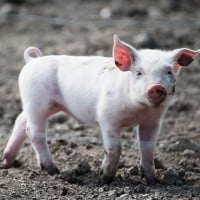 A pig is any of the animals in the genus Sus, within the Suidae family of even-toed ungulates. Pigs include the domestic pig and its ancestor, the common Eurasian wild boar, along with other species; related creatures outside the genus include the peccary, the babirusa, and the warthog.
A pig is any of the animals in the genus Sus, within the Suidae family of even-toed ungulates. Pigs include the domestic pig and its ancestor, the common Eurasian wild boar, along with other species; related creatures outside the genus include the peccary, the babirusa, and the warthog.
 A pig is any of the animals in the genus Sus, within the Suidae family of even-toed ungulates. Pigs include the domestic pig and its ancestor, the common Eurasian wild boar, along with other species; related creatures outside the genus include the peccary, the babirusa, and the warthog.
A pig is any of the animals in the genus Sus, within the Suidae family of even-toed ungulates. Pigs include the domestic pig and its ancestor, the common Eurasian wild boar, along with other species; related creatures outside the genus include the peccary, the babirusa, and the warthog.
15 Tyrannosaurus
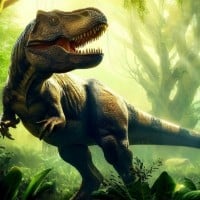 Tyrannosaurus, meaning "tyrant lizard", from the Ancient Greek tyrannos, "tyrant", and sauros, "lizard" is a genus of coelurosaurian theropod dinosaur. It also had a tremendous bite force, the strongest of any Dinosaur and living terrestrial animal. Its bite force reached up to 12,800 pounds (roughly 5805 Kilograms).
Tyrannosaurus, meaning "tyrant lizard", from the Ancient Greek tyrannos, "tyrant", and sauros, "lizard" is a genus of coelurosaurian theropod dinosaur. It also had a tremendous bite force, the strongest of any Dinosaur and living terrestrial animal. Its bite force reached up to 12,800 pounds (roughly 5805 Kilograms).
 Tyrannosaurus, meaning "tyrant lizard", from the Ancient Greek tyrannos, "tyrant", and sauros, "lizard" is a genus of coelurosaurian theropod dinosaur. It also had a tremendous bite force, the strongest of any Dinosaur and living terrestrial animal. Its bite force reached up to 12,800 pounds (roughly 5805 Kilograms).
Tyrannosaurus, meaning "tyrant lizard", from the Ancient Greek tyrannos, "tyrant", and sauros, "lizard" is a genus of coelurosaurian theropod dinosaur. It also had a tremendous bite force, the strongest of any Dinosaur and living terrestrial animal. Its bite force reached up to 12,800 pounds (roughly 5805 Kilograms).
16 Kissing Bug
17 Sea Urchin
18 Mantis Shrimp
 The mantis shrimp, or stomatopod, is a type of marine crustacean of the order Stomatopoda. Most species can grow to around 10 centimetres in length, though a few species reach up to 38 cm.
The mantis shrimp, or stomatopod, is a type of marine crustacean of the order Stomatopoda. Most species can grow to around 10 centimetres in length, though a few species reach up to 38 cm.
 The mantis shrimp, or stomatopod, is a type of marine crustacean of the order Stomatopoda. Most species can grow to around 10 centimetres in length, though a few species reach up to 38 cm.
The mantis shrimp, or stomatopod, is a type of marine crustacean of the order Stomatopoda. Most species can grow to around 10 centimetres in length, though a few species reach up to 38 cm.
19 Frog
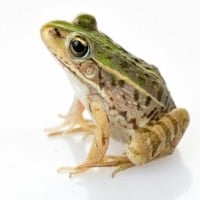 Frogs are a diverse and largely carnivorous group of short-bodied, tailless amphibians composing the order Anura.
Frogs are a diverse and largely carnivorous group of short-bodied, tailless amphibians composing the order Anura.
 Frogs are a diverse and largely carnivorous group of short-bodied, tailless amphibians composing the order Anura.
Frogs are a diverse and largely carnivorous group of short-bodied, tailless amphibians composing the order Anura. I love kissing frogs
20 Piranha
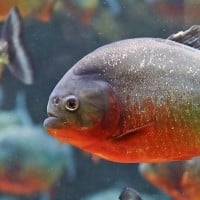 A piranha or piraña, a member of family Characidae in order Characiformes, is a freshwater fish that inhabits South American rivers, floodplains, lakes and reservoirs.
A piranha or piraña, a member of family Characidae in order Characiformes, is a freshwater fish that inhabits South American rivers, floodplains, lakes and reservoirs.
 A piranha or piraña, a member of family Characidae in order Characiformes, is a freshwater fish that inhabits South American rivers, floodplains, lakes and reservoirs.
A piranha or piraña, a member of family Characidae in order Characiformes, is a freshwater fish that inhabits South American rivers, floodplains, lakes and reservoirs. Frog is really above this?
21 Kangaroo
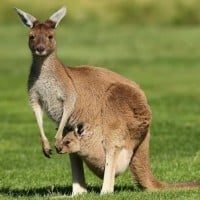 The kangaroo is a marsupial from the family Macropodidae. In common use the term is used to describe the largest species from this family, especially those of the genus Macropus: the red kangaroo, antilopine kangaroo, eastern grey kangaroo, and western grey kangaroo.
The kangaroo is a marsupial from the family Macropodidae. In common use the term is used to describe the largest species from this family, especially those of the genus Macropus: the red kangaroo, antilopine kangaroo, eastern grey kangaroo, and western grey kangaroo.
 The kangaroo is a marsupial from the family Macropodidae. In common use the term is used to describe the largest species from this family, especially those of the genus Macropus: the red kangaroo, antilopine kangaroo, eastern grey kangaroo, and western grey kangaroo.
The kangaroo is a marsupial from the family Macropodidae. In common use the term is used to describe the largest species from this family, especially those of the genus Macropus: the red kangaroo, antilopine kangaroo, eastern grey kangaroo, and western grey kangaroo. If you try to kick these animals, they will kick you with their large feet - IceBearRules
22 Anemone
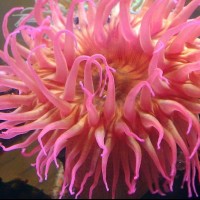

23 Spider
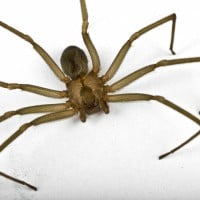 A venomous spider native to the central and southern United States, the Brown Recluse is known for its reclusive habits and preference for dark, undisturbed places. Its venom can cause necrotic skin lesions in humans, making it a species to be cautious of when encountered.
A venomous spider native to the central and southern United States, the Brown Recluse is known for its reclusive habits and preference for dark, undisturbed places. Its venom can cause necrotic skin lesions in humans, making it a species to be cautious of when encountered.
 A venomous spider native to the central and southern United States, the Brown Recluse is known for its reclusive habits and preference for dark, undisturbed places. Its venom can cause necrotic skin lesions in humans, making it a species to be cautious of when encountered.
A venomous spider native to the central and southern United States, the Brown Recluse is known for its reclusive habits and preference for dark, undisturbed places. Its venom can cause necrotic skin lesions in humans, making it a species to be cautious of when encountered.
24 Bear
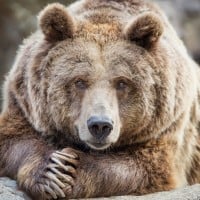 Bears are carnivoran mammals of the family Ursidae. They are classified as caniforms, or doglike carnivorans. Although only eight species of bears are extant, they are widespread, appearing in a wide variety of habitats throughout the Northern Hemisphere and partially in the Southern Hemisphere. Bears ...read more.
Bears are carnivoran mammals of the family Ursidae. They are classified as caniforms, or doglike carnivorans. Although only eight species of bears are extant, they are widespread, appearing in a wide variety of habitats throughout the Northern Hemisphere and partially in the Southern Hemisphere. Bears ...read more.
 Bears are carnivoran mammals of the family Ursidae. They are classified as caniforms, or doglike carnivorans. Although only eight species of bears are extant, they are widespread, appearing in a wide variety of habitats throughout the Northern Hemisphere and partially in the Southern Hemisphere. Bears ...read more.
Bears are carnivoran mammals of the family Ursidae. They are classified as caniforms, or doglike carnivorans. Although only eight species of bears are extant, they are widespread, appearing in a wide variety of habitats throughout the Northern Hemisphere and partially in the Southern Hemisphere. Bears ...read more.
25 Crocodile
 Crocodiles (family Crocodylidae) or true crocodiles are large semiaquatic reptiles that live throughout the tropics in Africa, Asia, the Americas and Australia. The term crocodile is sometimes used even more loosely to include all extant members of the order Crocodilia, which includes the alligators ...read more.
Crocodiles (family Crocodylidae) or true crocodiles are large semiaquatic reptiles that live throughout the tropics in Africa, Asia, the Americas and Australia. The term crocodile is sometimes used even more loosely to include all extant members of the order Crocodilia, which includes the alligators ...read more.
 Crocodiles (family Crocodylidae) or true crocodiles are large semiaquatic reptiles that live throughout the tropics in Africa, Asia, the Americas and Australia. The term crocodile is sometimes used even more loosely to include all extant members of the order Crocodilia, which includes the alligators ...read more.
Crocodiles (family Crocodylidae) or true crocodiles are large semiaquatic reptiles that live throughout the tropics in Africa, Asia, the Americas and Australia. The term crocodile is sometimes used even more loosely to include all extant members of the order Crocodilia, which includes the alligators ...read more.BAdd New Item